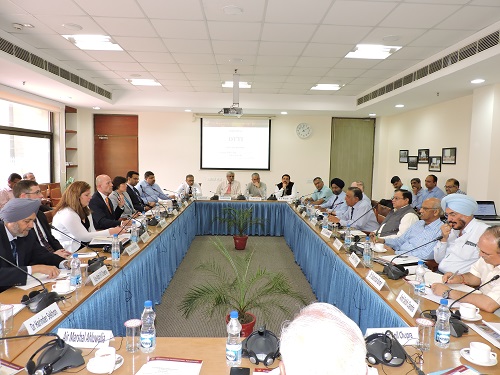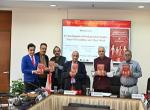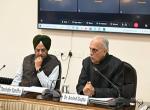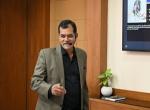In continuation of a dialogue on DTTI (Defence Trade and Technology Initiative) with the U.S. trade representative Keith Webster, held at the Vivekananda International Foundation on 5 May 2016, substantive discussions were held on three key aspects of the emerging dynamic of India-U.S. strategic partnership: India’s defence procurement policy, transfer of technologies as part of the U.S.’ defence sales to India, and three Foundational Defence Agreements which are awaiting their finalization between the two countries, viz, the Communications and Information Security Memorandum of Agreement (CISMOA), Logistics Support Agreement (LSA), and Basic Exchange and Cooperation Agreement (BECA).
Mr. Dhirendra Singh, former Home Secretary and the architect of India’s Defence Procurement Policy 2016, Dr. V.K. Saraswat, former Secretary Defence R&D and currently Member of NITI Aayog (erstwhile Planning Commission) and Dr. Sudershan Kumar, Chief Controller Research & Development from DRDO, among others, represented the VIF.
 While the discussions were held within the framework of ongoing strategic cooperation between the two countries, the interaction broadly reflected an added imperative on both sides to push the envelope, especially in view of the emerging consensus at the highest political level.
While the discussions were held within the framework of ongoing strategic cooperation between the two countries, the interaction broadly reflected an added imperative on both sides to push the envelope, especially in view of the emerging consensus at the highest political level.
As part of the interaction, the Indian interlocutors, through a series of detailed presentations, laid out a roadmap and the listed drivers behind a revised procurement policy for the Indian Armed Forces. The Indian side spoke of technologies which probably could give the much needed filip to India’s otherwise moribund indigenous defence production capabilities. They stressed on the fact that DPP 2016 – the first DPP to have come out under the present NDA regime – will drive much of ‘Make in India’ programme in the crucial defence sector. While efforts have been made in the revised DPP to reduce time taken in strategic decision-making, a cardinal shift is also being made with tweaking of acquisition procedures so as to facilitate smooth transfer of technologies, especially from chosen strategic partners.
They further underlined that offset will no longer be a hindrance to acquiring technologies which serve India’s strategic interests. Keith Webster, on his part, assured that technology transfer adjustments are also being made on the other end of the bilateral spectrum. However, there are limits in so far transfer of most innovative technologies is concerned. Those limitations stem partly from inhibiting U.S. legislative processes and partly from pure commercial considerations. General NC Vij, Director, VIF, while summing up the interaction, underlined the need to find a common ground between India’s need for high-end defence technologies and the business interests of privately-owned U.S. defence manufacturing companies. The interaction, held in an atmosphere indicating gradual understanding of each other’s viewpoints, amply underlined that synergizing research and co-development of defence equipments between India and the United States perhaps remains the pivot to emerging strategic cooperation between the two countries.







